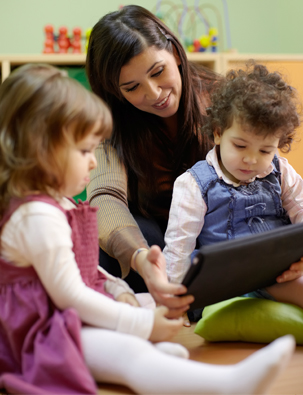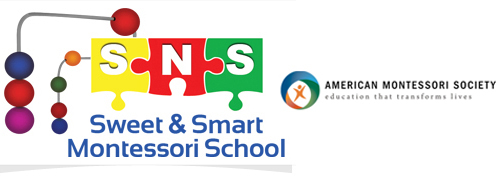Hi!
To us at Sweet and Smart Montessori our way of applying Montessori principles is more than Philosophy. It is a method. We are certainly inspired by it, but beyond that we live by it. As a parent myself I see the results of this method every day with my own daughter and not only because of the interaction with me, it is also with other teachers who apply the method. Her Grandparents are continuously amazed and repeat these Kids today have a different DNA!!! But rest assured it is not the DNA we are only helping to unleash every child’s own power.Miss Claudia
 Montessori allows the child to learn practical life skills and independence that will be the foundation for their life. Although Maria Montessori (1870-1952) was a pioneer in the field of education, she was trained as a physician, not a teacher. Free of educational doctrine and theory, she instead relied upon a holistic, multidisciplinary background in medicine, psychology, philosophy, and anthropology in her research with children.
Montessori allows the child to learn practical life skills and independence that will be the foundation for their life. Although Maria Montessori (1870-1952) was a pioneer in the field of education, she was trained as a physician, not a teacher. Free of educational doctrine and theory, she instead relied upon a holistic, multidisciplinary background in medicine, psychology, philosophy, and anthropology in her research with children.
Through her scientific observations of children, Montessori made a dramatic discovery — “the child’s true normal nature” — more capable, competent and potent than traditionally believed. Montessori observed that in an environment which allows for purposeful, self-directed activity, children become spontaneously absorbed in self-selected work, appearing calm and refreshed when complete. Repeated experiences of “spontaneous concentration” transform the child’s personality to one of joy, tranquillity, compassion, and curiosity; one that is capable of profound engagement and concentration! Montessori believed this to be the “normal” state of psychic health, because she observed this phenomenon with children throughout the world.
When children are freed from inner turmoil and distraction, an intrinsic dynamic drive towards growth and development propels them to “self-construct” through movement, exploration, and discovery of their environment. With the same drive for life which animates the orientation of leaves towards sunlight, children are driven towards growth and learning. Montessori believed that the child can only become himself through the development of concentration and the will. Three hour work periods are an essential feature of a Montessori classroom. Rather than an arbitrary bell or time limit dictating the amount of time allotted for learning, children are permitted to continue working until they feel complete. Continuous opportunities for repetition educate the child’s hands, and cycles of activities complete the child by enabling him to coordinate his movements and deepen his concentration. Believing that children construct themselves through personal effort and engagement, the child in the prepared environment, is free to move about and choose activities of his own interest. The prepared environment encourages exploration, movement, and focused activity, because children learn by doing. Montessori classrooms have multi-aged groupings, which reduce competition, provide each learner time to develop relationships with the teacher and one another, as well as to take on the role of both learner and teacher (older students will often give presentations to younger students). Although the focus of Montessori’s work was on the individual child, the goal of her work encompassed the whole of society. She viewed the spirit of the child as the world’s greatest resource and felt if we wanted to improve the world, we must start by supporting the natural development of the child.



